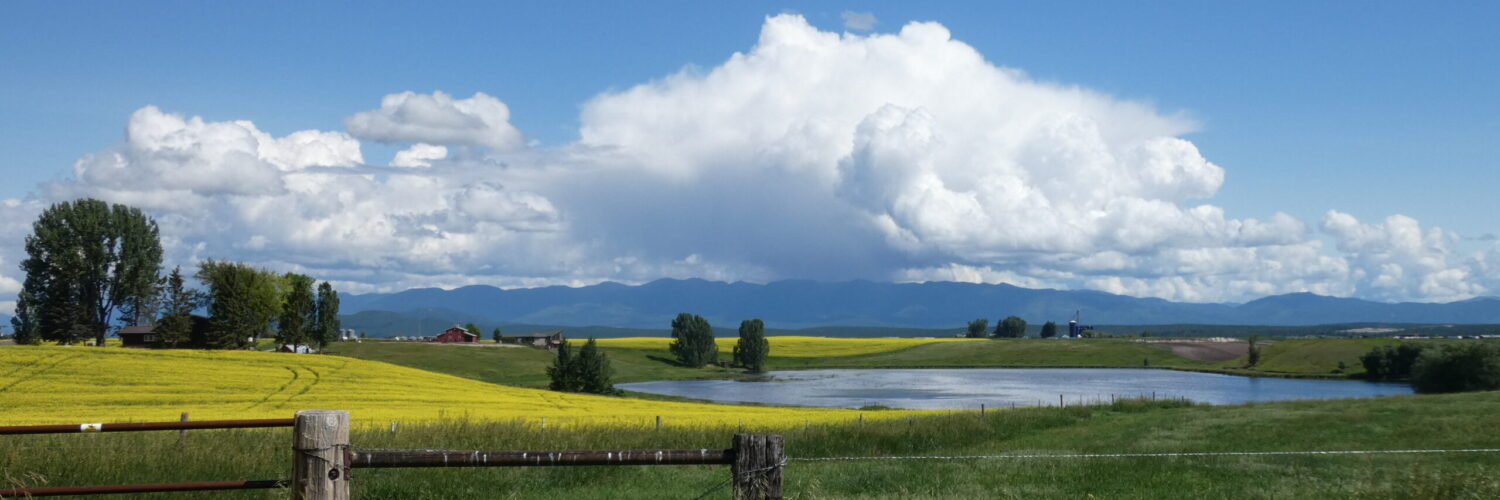by Pat Jaquith
pat@westvalleynaturalists.org
Skip’s journal post about Pileated Woodpeckers inspired me to add a few more images and some of my observations of these unforgettable birds that the American Birding Association has named the 2021 Bird of the Year.
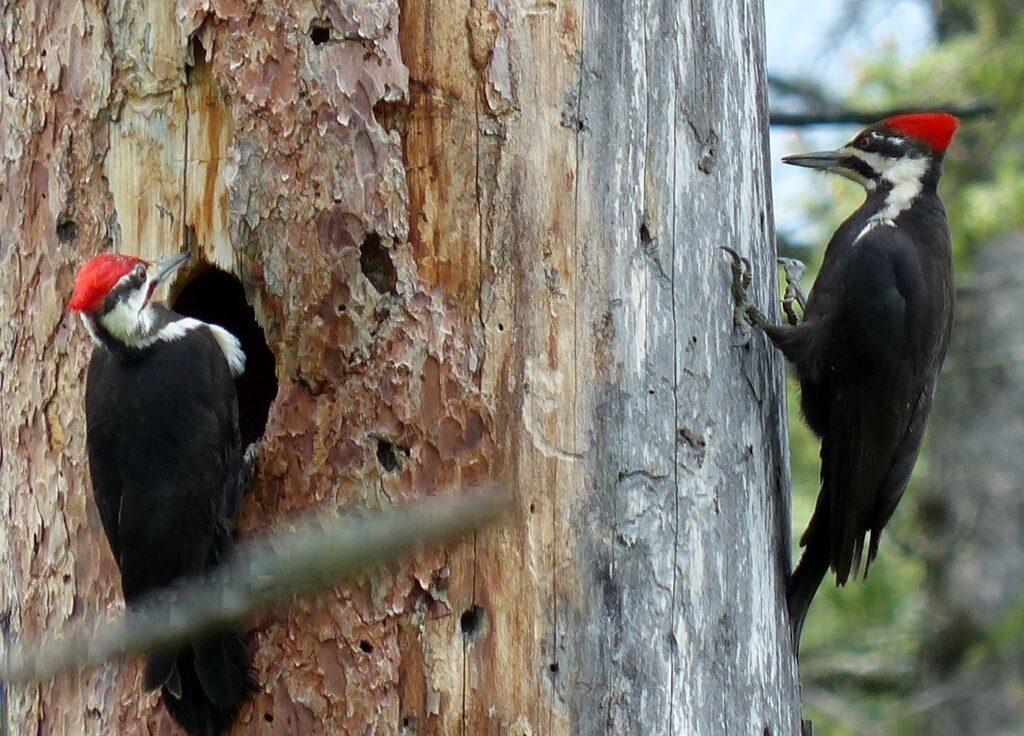
Around the middle of April, 2016, I began seeing a pair of Pileated Woodpeckers near our house and I really hoped they might be scouting a nest site. The hammering commenced on a dead Ponderosa Pine; construction was underway! The male frequently does most of the excavation of the oval-shaped nest hole; the female on right would fly in off and on as if to check on progress and encourage her mate.
The easiest way for me to distinguish between male and female Pileated woodpeckers is to get a good look at the red cap. The male (on left above) wears his red cap pulled down to the top of his beak. The red cap on females starts above her eyes.
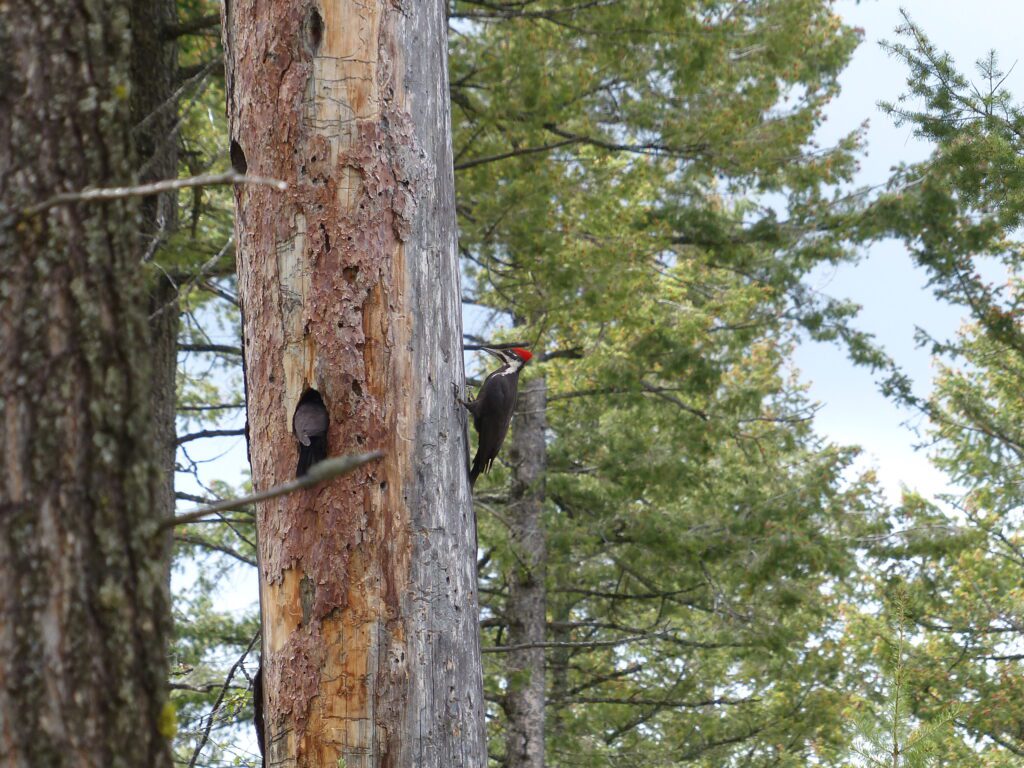
I’d watch with binoculars from a distance when I happened to see them in the area. As excavation progressed, the male would disappear into the hole and come out with a beak full of chips. I don’t have pictures of the activity after this; I didn’t want to scare them off.

If you look closely, you can see the tongue extending out to retrieve a morsel.
Insects are the principal attraction when the Pileated Woodpecker excavates a rectangular hole in a tree. I enjoy watching them work! They cling to the bark with all 4 clawed toes, lean back on the barbed tail feathers and pound as if splitting firewood with their beak instead of a maul. If you find a freshly-excavated hole with a pile of wood chips at the base of the tree, you can poke about gently with a stick: it’s likely you will find shiny black pieces of ant exoskeletons in white excrement.
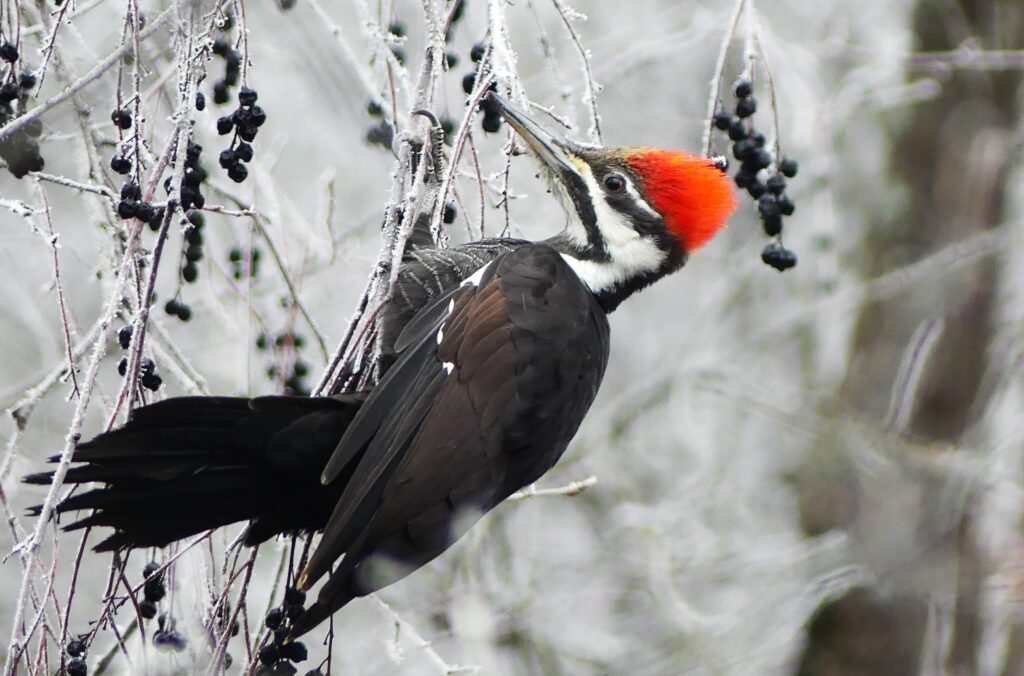
Although Pileated woodpeckers are best-known for chiseling dead wood to harvest ants, they will eat fruit, too. On December 29, 2023, hoar frost coated nearly every surface. I first spotted this woodpecker on a cottonwood tree, but my attention was more on my freezing fingers than in dallying to get more than a quick look. Just seconds later, the black bird rocketed across the trail in front of me and landed in the ice-coated branches of a Common Buckthorn. Somehow, I shed mittens and focused on the amazing bird eating frozen fruit.
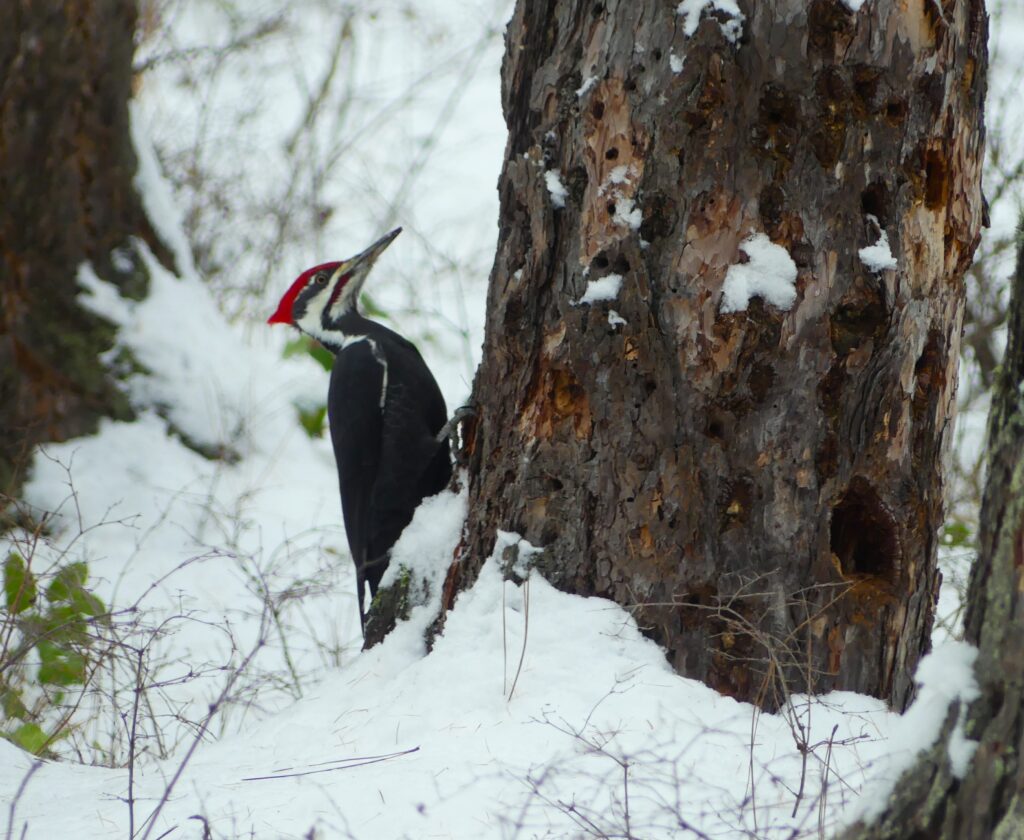
1.10.24 This male Pileated woodpecker landed on a well-excavated snag and started investigating as if to see whether ants or some other insect were in this old favorite home. Note the red crest that starts at the top of its beak and the red malar. Also of interest: woodpeckers are unusual in the fact that they do not have down feathers for insulation. It is speculated that from early times, they evolved to live in the protection of the holes they excavate, and down was not needed.
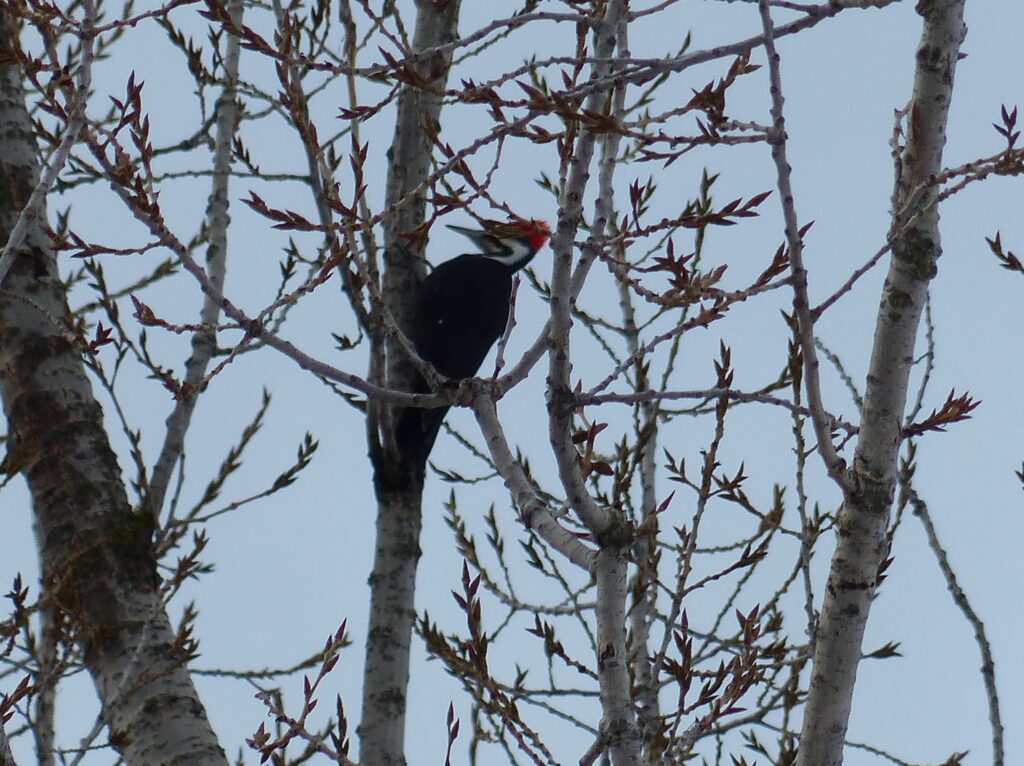
Recycle, Reduce, Reuse has long been practiced among birds! Woodpeckers are designated a keystone species because they are key to some other birds’ nesting. Wrens, owls, kestrel, tree swallows, White-breasted nuthatches, Brown creepers, bluebirds, and some species of ducks such as Wood ducks, goldeneyes, and buffleheads are cavity nesters that are unable to excavate their own nest holes; they frequently make use of woodpeckers’ holes. In winter, small birds may congregate in old woodpecker holes to stay warm. Let’s think twice before we cut down those old dead trees!
